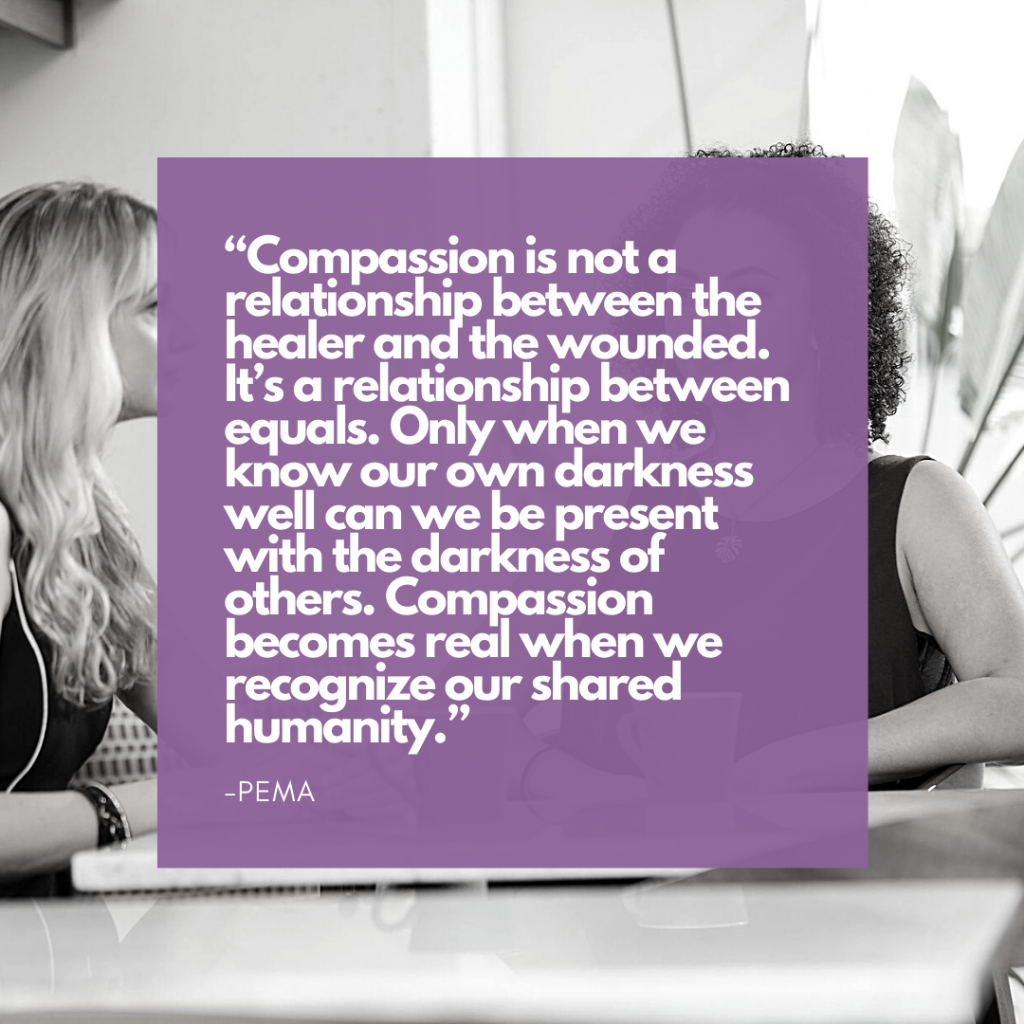The COVID-19 pandemic has led to a greater increase in humanity and compassion within people across the board. For example, most workplaces have become more understanding of all employees’ personal lives, as home and work are now blended together more than ever before. Co-workers are quite literally seeing each other’s lives on display each day, and many employees have had to actively fill the role of parents, teachers, and caregivers on top of their day jobs.
 There is, however, a stark difference between connectivity and genuine connection. In some ways, the virtual nature of most workplaces has us more connected than ever, but more video conferencing does not necessarily equate to more community. As a result, business leaders have had to adapt and work to keep employees feeling connected in a remote world. If you’re in this position currently, one important thing to remember is that the community is active, not passive. Great culture derives from great teams, so even though the dust will eventually settle to some degree – don’t let the importance of human connection fade along with it. Organizations that have exercised grace and compassion during this time have likely unified employees in the long term, and this will hopefully spark a new perspective on workplace community long after the pandemic fades into memory.
There is, however, a stark difference between connectivity and genuine connection. In some ways, the virtual nature of most workplaces has us more connected than ever, but more video conferencing does not necessarily equate to more community. As a result, business leaders have had to adapt and work to keep employees feeling connected in a remote world. If you’re in this position currently, one important thing to remember is that the community is active, not passive. Great culture derives from great teams, so even though the dust will eventually settle to some degree – don’t let the importance of human connection fade along with it. Organizations that have exercised grace and compassion during this time have likely unified employees in the long term, and this will hopefully spark a new perspective on workplace community long after the pandemic fades into memory.
The Role of Compassion in Building Community
At Gallaher Edge, we seek to build community at work through openness, trust and compassion. Let’s dive a little deeper into the element of compassion. Community can be a fragile thing and it needs the proper environment to grow and thrive. In essence, we have been building an incubator for the little egg of community within your organization. If openness is the foundation and trust is the support structure, then compassion is the roof that provides shelter and protection. We know it’s kind of a goofy metaphor but it works. Because we’re all hit by the storms of life all the time and it’s the compassion of others that creates shelter for the community from those storms and provides us grace while we’re going through them. Because we’re all human. If we don’t acknowledge that truth, we’ll just put on a fake hard exterior shell to protect ourselves and true community will die.
 Compassion Defined
Compassion Defined
Compassion is defined as empathy combined with the desire to help somebody reduce their suffering. Empathy is defined as the ability to understand and share feelings with another. So by definition, empathy requires vulnerability. If you are unable or unwilling to access your own feelings, then you will not be able to empathize with others. As we articulated while speaking about openness, you must first be open with yourself. Allowing yourself to know and feel your own thoughts and feelings and overall experience is a crucial part of compassion.
Compassion and Defensiveness
Compassion is hard for many people because of their tendency to defend themselves against unpleasant feelings. We have to get past our own defenses to truly feel compassion for others. Getting past your own defensiveness signals to others that you care about their interests as well as your own, which builds trust.
Compassion is actually a powerful way to reduce defensiveness between two people. Because defensiveness emerges based on a story in your head about what that person must think of you that they treat you that way, compassion works as a powerful reframing tool. Imagine, for example, you’re in a meeting and a team member snaps at you when you make a suggestion. A common defensive reaction would be to snap back or perhaps shut down. But if you felt a strong sense of compassion for that person, even without knowing their story, you could check that story in your head and recognize that they are in some kind of pain or difficulty, and that’s what’s leading to that behavior. Responding with curiosity and compassion is a powerful diffuser.
A Vision of Compassion
When you’re on a team where each person is putting the needs of the others first; everybody’s needs get met without anybody fighting to get their own needs met. This is a much healthier dynamic than when it is everybody out for themselves.
A well-known parable describes a scene where thin, undernourished, sickly people all sit atop a bowl of stew, holding spoons with handles longer than their arms. So, while they can reach their spoons into the stew, they can’t get the stew back into their mouths. Another scene looks identical at first glance, except in this one, the people are well-nourished, happy, and healthy, still holding the spoons with the giant handles, unable to reach the stew into their own mouths. The difference in this parable is that in this scene, the people feed each other.
When each person is out only for themselves, while it is possible for each person to get their needs met, it feels completely different. When there is a true sense of community, and barely a whisper of fear, people are able to keep their energy focused on one another and their common goal, rather than focusing their energy on making sure they “have enough” for themselves. It becomes a much more powerful use of energy. One of our clients, Jonathan Taylor, a serial entrepreneur, used to tell his teams that their first job is to help the customers, their second job was to help their coworkers, and their third job was to do their own job.
He says, “In addition to the culture benefits of making our goals clear, it made it easier for managers to understand when we didn’t have enough people to help customers or help other employees who were stuck waiting on their peers. It’s very simple to see when someone isn’t doing their job. And you ask why, and they say: ‘I’m helping everyone else all the time.’”
This means that if you’re struggling to get your own job done, instead of a culture of blame, your team will take a look at what’s contributing to that in a more comprehensive manner, and approach it’s shared accountability to solve the problem together.
Picture two people sitting back-to-back, leaning on each other. This configuration requires less energy from each of them to hold a position of sitting up compared to them each sitting up on their own. So, it’s much less energy to have the same output. Compassion and a sense of community help create this same phenomenon on teams.
Compassion and Workplace Outcomes
Research featured in Positive Psychology has shown that compassion is related to a number of positive workplace outcomes, including healthy interpersonal relationships, building trust and reciprocation, less stress, and greater job satisfaction. When team members in an organization are kind to one another, expressing compassion, research shows it doesn’t just impact the two people involved, but also has a positive impact on the organization’s performance culture as a whole. Compassion, along with openness and trust, are three essentials to creating community at work. Grow your understanding of these concepts when you explore the Gallaher Edge Blog.
Ready to take your leadership to the next level? Get your FREE copy of my eBook, Level Up: 3 Steps to Be a Better Leader. Click here to download!
